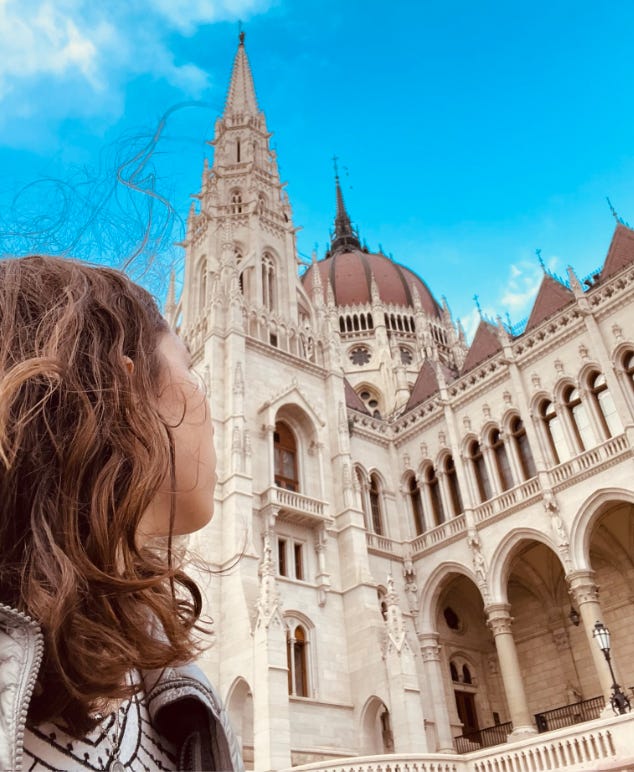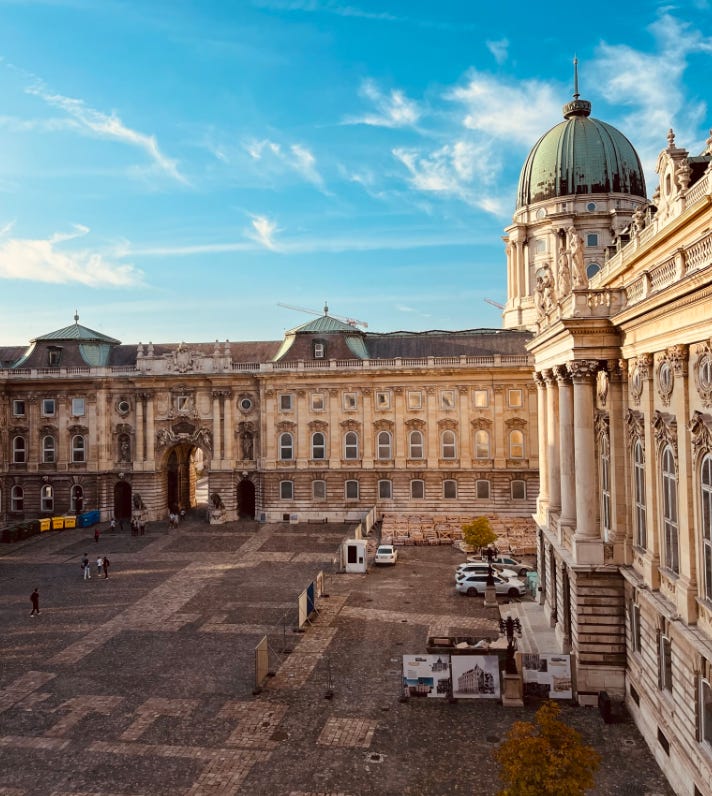Last week, I went to Budapest to look at some books in the Semmelweis Library for my research. Vienna used to be my record for “Easternmost destination,” but now Budapest has that slot. I’m glad that I got to explore another new city with my free time!
Some of these things might be common knowledge to people that have spent a lot of time in Eastern Europe, but for now we’re going to go over the things I learned over the course of this trip.
Budapest actually used to be two cities on opposite sides of the river: Buda and Pest. In the late 1800s, the two cities combined, producing the compound name “Budapest.”
I stayed on the Buda side, and I was in for a workout. I guess they don’t call the neighborhood “Castle Hill” for nothing; half the sidewalks are just stairs. But the burn to my thighs was completely worth it, because from most any height on the hill I got a beautiful view of the Danube River.
Fisherman’s Bastion is a great lookout point to look at the city with a view of the sunrise. Because it wasn’t crowded in the mornings, it was also a great place to drink a to-go coffee. That red-domed building in the distance is the Hungarian Parliament Building.
It’s symbolically placed on the opposite side of the river from Buda Castle (see below) as a nod to the city’s past and future.
But beyond castles and chimney cakes, I was here to look at medical history. On Sunday, I took a more nerdy tour of an underground hospital used during World War II. Budapest has an extensive cave system, especially under Castle Hill, so this hospital was instated to be able to withstand heavy bombing (and, during the Cold War, potential nuclear threats) to the city. I can’t imagine what it would be like to perform operations deep underground.
It sounds pretentiously poetic to say that hospitals hold a mirror to the ills of society, but I came out of the tour knowing a lot more about the darker parts of Budapest’s history. The city suffered heavy losses during World War Two, including a 50-day siege by Soviet and Romanian forces at the end of the war. The hospital was completely overrun, with most patients lying on the floor or even in the cave system.
Most of my week was spent reading in the Semmelweis Library, and I also got to visit the birthplace of Ignaz Semmelweis, the famous obstetrician. His family ran a grocery store in the Taban neighborhood, and the building is now a museum.













Always fun to learn! Keep sharing